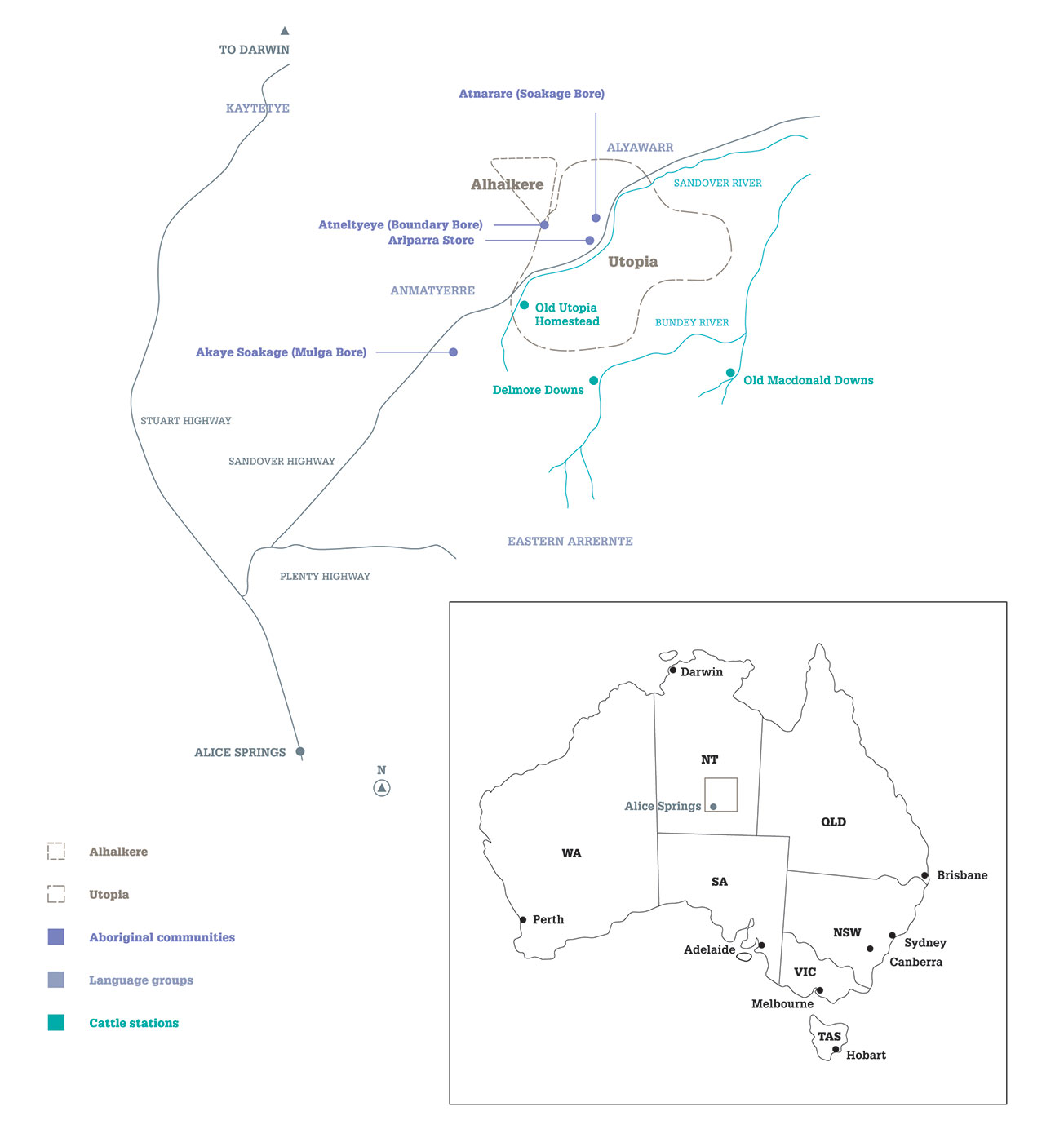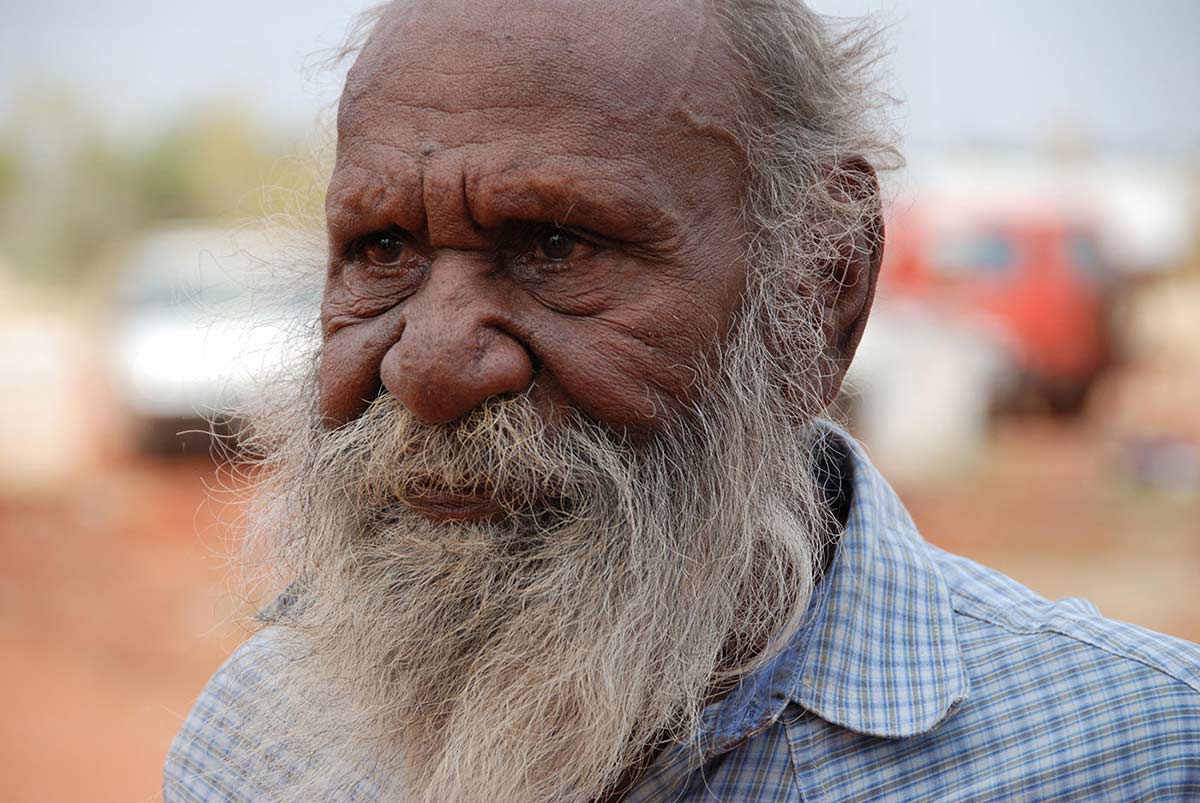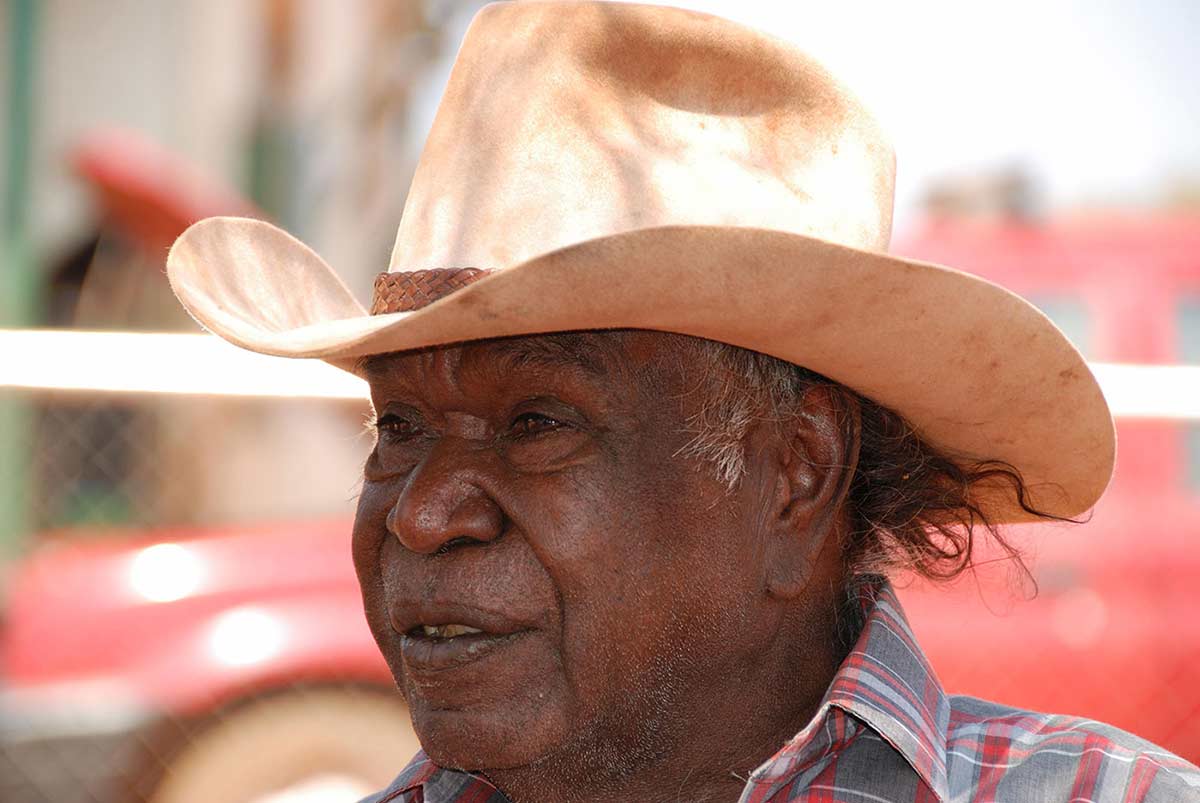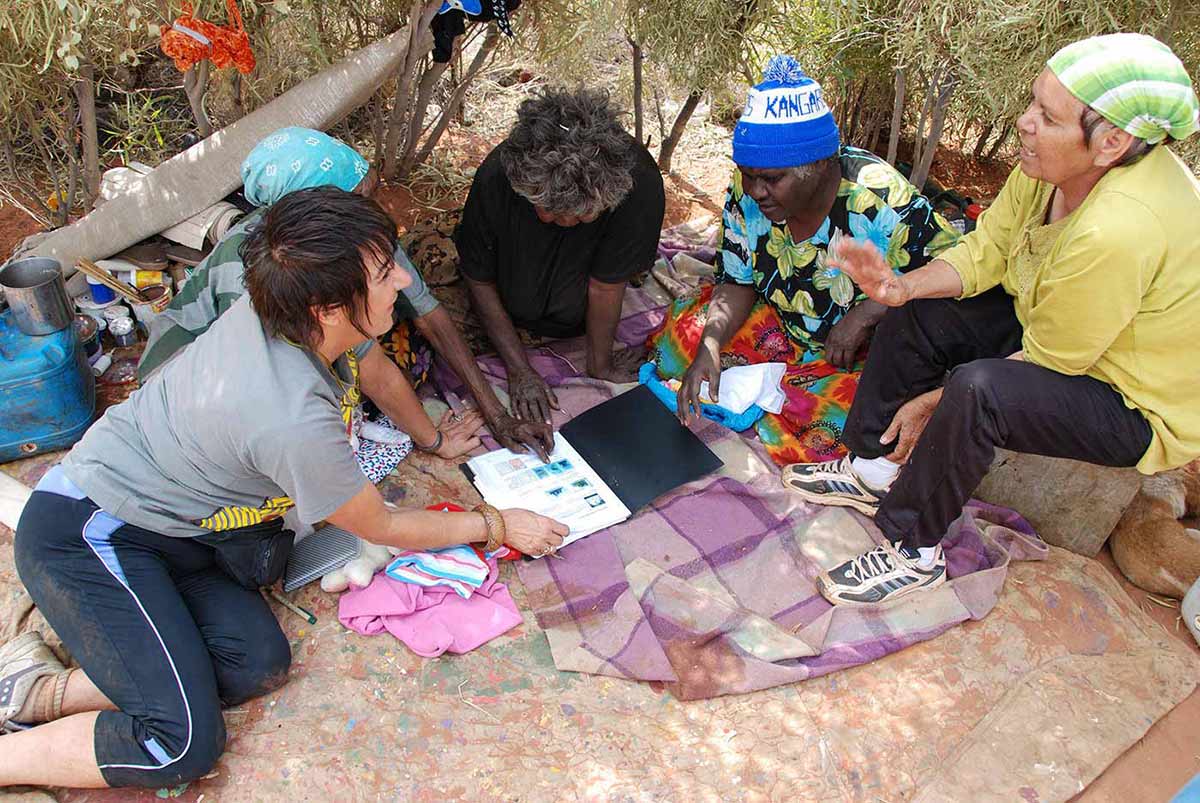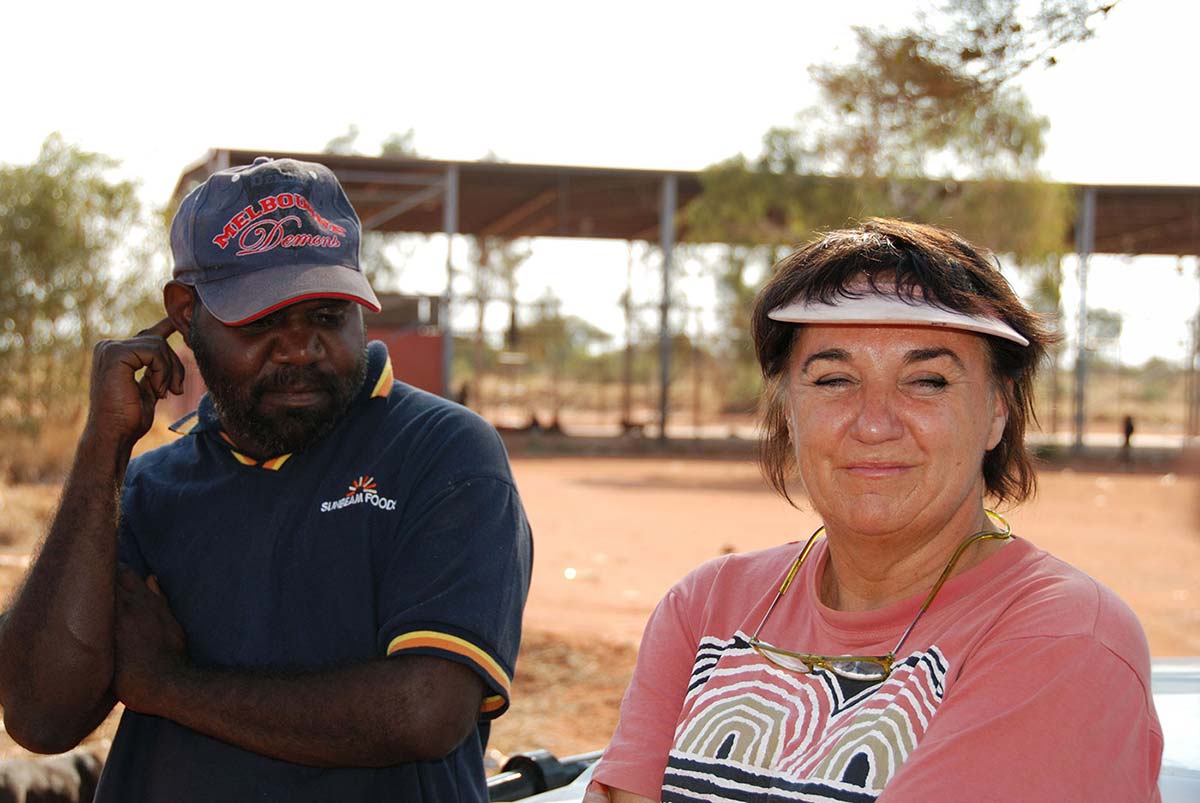Area known as Utopia
Emily's Country, Alhalkere, adjoins the area known as Utopia, which is located approximately 230 kilometres north-east of Alice Springs. Utopia is not one place but a grouping of 5 places, or Countries, named after the ancestors who formed them.
Utopia's Indigenous place names – Alhalpere, Rreltye, Thelye, Atarrkete and Ingutanka – are also the particular names of families who are custodians for these Countries. The area was named Utopia in the 1920s by early pastoralists, after they discovered rabbits so prolific and tame they could catch them by hand.
The population of between 880 and 1,000 people live in some 16 small camps, dotted across an area of 2,000 square kilometres. The community is structured on extended family groups whose camps are generally situated on their clan lands. There are about 120 working artists in the community.
The senior custodians of Emily's country, Alhalkere, are Lindsay Bird Mpetyane and Greeny Purvis.
Utopia community
The trip to Utopia in September 2007
by Margo Neale, Principal Curator
In September 2007 Margo Neale and the Ronin Productions team made an official trip up north as part of ongoing consultations with the Utopia community.
The senior custodians of Emily's country, Alhalkere, are Lindsay Bird Mpetyane and Greeny Purvis. I would like to acknowledge the invaluable assistance given by members of the Utopia community to this exhibition.
In particular Barbara Weir who generously and freely offered her time and assistance once she knew I was heading to Utopia with the Ronin Films crew by invitation from other community members. She hopped on board to pave the way in a number of ways. Most notably she took us to all the right people in all the right places, no matter how hard it was or how long it took.
Being a language speaker was a great asset. It was important that we all understood each other. Her respect for culture, for the custodians of Alhalkere and observance of protocols was both dogged and inspirational.
A mob of people from Canberra with cameras during the first weeks of the Northern Territory intervention was not a good look and Barbara did a lot of explaining on our behalf. She took us to a very special camp of Emily's close female relatives (and relatives of hers) – a camp that is rarely visited by 'outsiders'.
Their respect for Barbara and her family was clearly demonstrated in a number of ways and in particular by the way the women honoured us with a special series of songs about Alhalkere for the education film that goes in the exhibition's Utopia Room.
They also wanted us to film their stories about their family lineage and connection to Alhalkere, which was indeed a great privilege.
We camped together in swags on the red earth and Barbara kept us supplied with bush tucker as well as lots of information about her early years with Emily and her family. She was a deadly goanna hunter, constantly stopping to chase yet another one over the sand hills that no one else could see for looking.
Barbara and Gloria Petyarre along with Barbara's son Fred Torres braved the depths of winter (with snow) to attend the opening in Osaka. It was too far away and too cold for the other older members of the community who might otherwise have attended. Too risky for their health. Their attendance was important as artists from Utopia with many overseas exhibitions under their belt and a great capacity to talk about Emily and the exhibition to Japanese audiences.
They participated in media events and Gloria gave a moving impromptu performance of songs and dance movements related to Emily's Country and Dreamings at the reception. It was greatly appreciated by all, especially given that few would ever have had any Aboriginal cultural experience before Gloria's performance.
